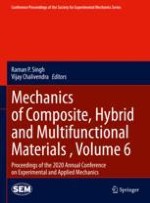Mechanics of Composite, Hybrid, and Multifunctional Materials, Volume 6 of the Proceedings of the 2020 SEM Annual Conference & Exposition on Experimental and Applied Mechanics, the sixth volume of seven from the Conference, brings together contributions to this important area of research and engineering. The collection presents early findings and case studies on a wide range of areas, including:
Recycled Constituent Composites
Nanocomposites
Mechanics of Composites
Fracture & Fatigue of Composites
Multifunctional Materials
Damage Detection & Non-destructive Evaluation
Composites for Wind Energy & Aerospace Applications
Computed Tomography of Composites
Manufacturing & Joining of Composites
Novel Developments in Composites
